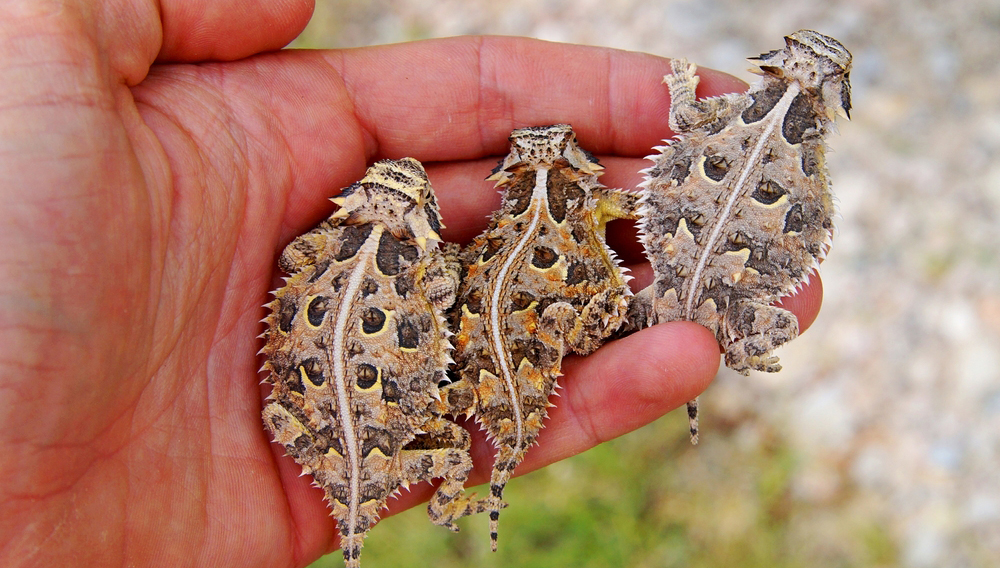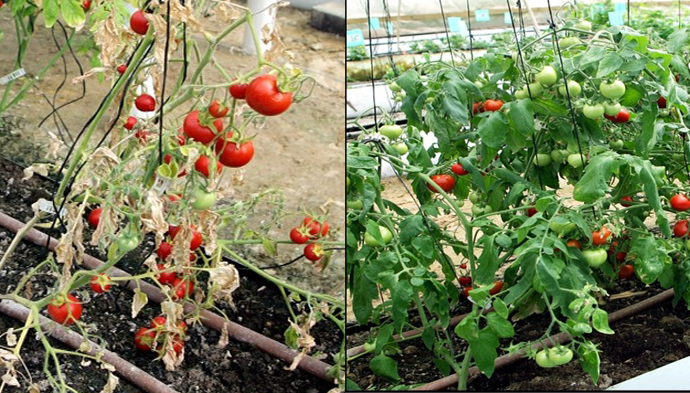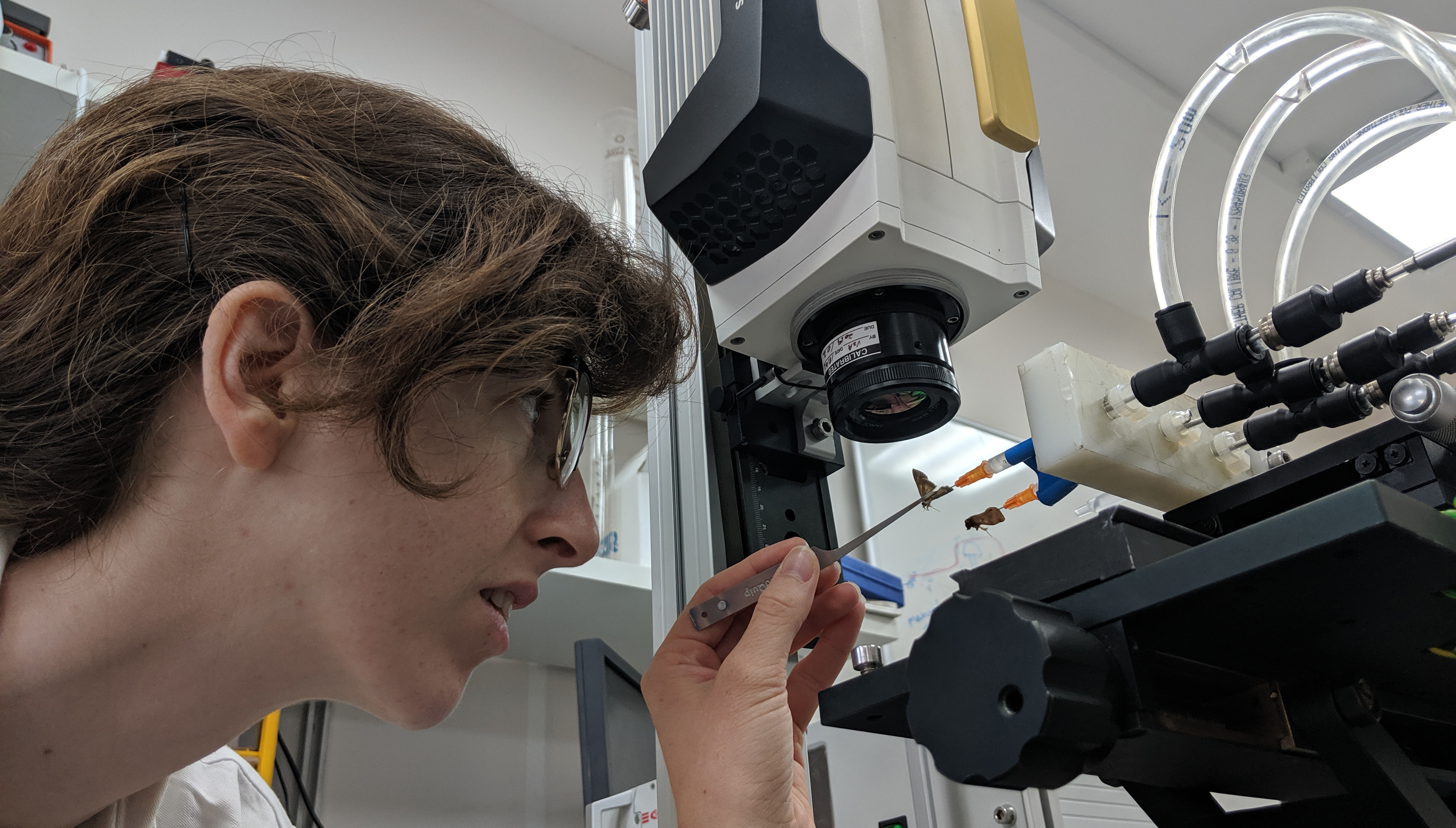TAU launches new center for quantum science & tech
The center will bring together twenty labs from across campus and offer academic programs as well as promote international ties
Twenty labs from different disciplines
TAU Alumni lead The Marker’s 40 Under 40 list
The Marker magazine has published its list of 40 most influential people under 40 in Israel for 2019, and the TAU Alumni community has 12 entries – more than any other university!
Our 12 influencers are:
- Ayelet Perlstein, Counselor for Israel in the IDB Invest at Inter-American Development Bank, alumna of the Coller School of Management
- Areen Safady Atila, Attorney at the Israeli State Attorney’s High Court department, alumna of the Faculty of Law
- Dr. Nadav Levy, Director of the public transportation department at the Tel Aviv-Jaffa Municipality, alumnus of the Porter School of Environmental Studies
- Sapir Caduri, Software Engineer at Google Israel, alumna of the Blavatnik School of Computer Science
- Roni Bonjack, Head of Developer Programs – Europe, Middle East and Africa at Facebook, alumna of the faculty of Engineering
- Dr. Shiri Chechik, Alumna and Researcher at the Blavatnik School of Computer Science
- Leor Roseman, Researcher at the Imperial College London’s Centre for Psychedelic Research, Alumnus of the Faculty of Life Sciences and the School of Psychology
- Yael Kochman, Partner & CEO at Re:Tech Innovation Hub, Alumna of the Faculty of Scocial Sciences & Coller School of Management
- Miki Strasburger, VP Commerce & Aviation at EL AL Israel Airlines, Alumnus of the Coller School of Management
- Sagi Ben Simon, Founding Partner at Beta Finance, Alumnus of the Faculty of Scocial Sciences & Coller School of Management
- Imri Galai, General Manager at Wolt Israel, Alumnus of the Coller School of Management
- Hisham Abdulhalim, Product Manager at PayPal, Masters Degree Student at the Faculty of Humanities
Each is a source of pride and honor for TAU!
The full project (in Hebrew)>
TAU among top 10 universities for venture capital-backed entrepreneurs
Joining Stanford, UC Berkeley, and MIT, TAU is the only non-U.S. university to make top 10 of global VC list
Tel Aviv University has been ranked eighth in the master list of 50 global universities producing the most venture capital-backed entrepreneurs, according to the 2019 PitchBook Universities Report. The top seven universities were all American, led by Stanford University and the University of California, Berkeley.
TAU appears on the list for the sixth year in a row, powerfully reflecting the university’s continuing success in the global business/investor community. TAU came in ahead of Yale University (ranked at #11), University of California, Los Angeles (#12), and Princeton University (#13). Three other Israeli universities made the PitchBook cut: The Technion-Israel Institute of Technology (#14), The Hebrew University of Jerusalem (#34), and Ben-Gurion University of the Negev (#49).
According to PitchBook, 694 TAU graduates-turned-entrepreneurs founded 577 companies raising $10.6 billion in a first round of venture funding in the period between January 2006 and August 2019. TAU was also ranked 13th in the list of the 25 top MBA programs, which was led by Harvard University.
At the center of innovation
TAU is Israel’s largest and most diverse university, consistently rated among the top 100 research universities globally. Located in the heart of Tel Aviv, the second largest technology sector in the world, TAU is the innovation hub of the “Start Up Nation.” With over half the 30,000+ student body engaged in multi-disciplinary research, TAU is uniquely positioned as an incubator of groundbreaking ideas.
As a venture capital data provider, PitchBook is recognized for its exhaustive data platform, which includes information on tens of thousands of VC-backed companies, investors, and service providers. PitchBook‘s database taps into the educational backgrounds of over thousands of VC founders worldwide.
The list ranks the top 50 universities that produced VC-backed founders on a global basis and is based on the number of founders that received first-round venture funding between January 1, 2006, and August 15, 2019.
Coral danger: breakdown in spawning could mean extinction
Synchronized coral spawning has become erratic, endangering the long-term survival of coral species, Tel Aviv University researchers say
Coral reefs are among the most diverse and productive ecosystems on our planet. But due to climate change and other human stressors, reef-building corals that reproduce by means of broadcast-spawning — the simultaneous release of eggs and sperm into open water — may now be under threat of extinction.
A new Tel Aviv University study finds that the highly synchronized, iconic spawning events of certain reef-building corals in the Gulf of Eilat/Aqaba, Red Sea, have completely changed over time and lost their vital synchrony, dramatically reducing chances of successful fertilization.
According to the research, led by Prof. Yossi Loya and PhD candidate Tom Shlesinger of TAU’s School of Zoology and published in Science, the breakdown in coral spawning synchrony has led to a dearth of new recruits and stagnant aging populations, creating circumstances for extinction.
It’s all in the timing
“Coral spawning, often described as ‘the greatest orgy in the world,’ is one of the greatest examples of synchronized phenomena in nature,” explains Prof. Loya. “Once a year, thousands of corals along hundreds of kilometers of a coral reef release their eggs and sperm simultaneously into the open water, where fertilization will later take place. Since both the eggs and the sperm of corals can persist only a few hours in the water, the timing of this event is critical.”
Successful fertilization, which can take place only within this narrow time window, has led to the evolution of a precise spawning synchrony. Such synchronicity relies on environmental cues: sea temperature, solar irradiance, wind, the phase of the moon and the time of sunset.
In 2015, the researchers initiated a long-term monitoring of coral spawning in the Gulf of Eilat/Aqaba. Over four years, they performed 225 night field surveys lasting three to six hours each during the annual coral reproductive season from June to September and recorded the number of spawning individuals of each coral species.
“We found that, in some of the most abundant coral species, the spawning synchrony had become erratic, contrasting both the widely accepted paradigm of highly synchronous coral spawning and studies performed on the exact same reefs decades ago,” says Shlesinger.
Extinction through reproductive failure
The researchers then investigated whether this breakdown in spawning synchrony translated into reproductive failure. They mapped thousands of corals within permanent reef plots, then revisited these plots every year to examine and track changes in the coral community — i.e., how many corals of a given species had died compared with new juveniles recruited to the reef.
“Although it appeared that the overall state of the coral reefs at Eilat was quite good and every year we found many new corals recruiting to the reefs, for those species that are suffering from the breakdown in spawning synchrony, there was a clear lack of recruitment of new juvenile generations, meaning that some species that currently appear to be abundant may actually be nearing extinction through reproductive failure,” says Shlesinger.
The future of corals?
“Several possible mechanisms may be driving the breakdown in spawning synchrony that we found,” Prof. Loya concludes. “For example, temperature has a strong influence on coral reproductive cycles. In our study region, temperatures are rising fast, at a rate of 0.31 degrees Celsius per decade, and we suggest that the breakdown in spawning synchrony reported here may reflect a potential sublethal effect of ocean warming. Another plausible mechanism may be related to endocrine (hormonal) disrupting pollutants, which are accumulating in marine environments as a result of ongoing human activities that involve pollution.”
“Regardless of the exact cause leading to these declines in spawning synchrony, our findings serve as a timely wake-up call to start considering these subtler challenges to coral survival, which are very likely also impacting additional species in other regions,” says Shlesinger. “On a positive note, identifying early-warning signs of such reproductive mismatches will contribute to directing our future research and conservation efforts toward the very species that are at potential risk of decline, long before they even display any visible signs of stress or mortality.”
Protein Mapping Pinpoints Why Most Metastatic Melanoma Patients Do Not Respond to Immunotherapy
Lipid metabolism found to affect cancer cells’ visibility to the immune system, say TAU, Sheba Medical Center researchers
Tel Aviv University and Sheba Medical Center researchers say they have discovered why more than half of patients with metastatic melanoma do not respond to immunotherapy cancer treatments.
Wielding proteomics, an innovative “protein mapping” approach, a team of researchers led by Prof. Tami Geiger, Prof. Gal Markel, and Dr. Michal Harel of TAU’s Sackler School of Medicine and Sheba’s Ella Lemelbaum Institute for Immuno-Oncology have answered the burning question: Why do immunotherapy treatments greatly help some patients with melanoma but not affect 60 percent of metastatic melanoma patients?
The researchers, whose findings were published on September 5 in Cell, compared the responses of 116 melanoma patients to immunotherapy — one group in which immunotherapy was successful and a second in which immunotherapy was not successful. Harnessing proteomics, a powerful protein mapping technology, they discovered differences in the metabolism, or energy production process, of the cancer cells of the two groups.
“In recent years, a variety of cancer immunotherapy therapies have been used, therapies that strengthen the anti-cancer activity of the immune system,” explains Prof. Markel, a senior oncologist and scientific director of the Ella Lemelbaum Institute. “These treatments have been shown to be highly effective for some patients and have revolutionized oncology. However, many patients do not respond to immunotherapy, and it is critical to understand why.
“Can we predict who will respond? Can we alter treatment in order to increase responses? In our research, we focused on metastatic melanoma, a devastating disease that until recently had no efficient treatments. It was clear to us that pre-treatment samples from responders and non-responders would be key.”
To better understand treatment resistance mechanisms, the scientists examined tumors taken from 116 patients using proteomics.
“In the proteomic lab, we use an instrument called a mass-spectrometer, which enables global mapping of thousands of proteins,” explains Prof. Geiger, head of TAU’s Proteomics Lab. “We then followed up with extensive computational analysis to identify the proteins that differentiated between the response groups.”
The proteomic comparison identified major differences between responders and non-responders to immunotherapy. “In the responders, we found higher levels of proteins associated with lipid metabolism, which led to better recognition by the immune system,” says Prof. Geiger.
In collaboration with the Salk Institute in San Diego and Yale School of Medicine, researchers then examined their findings in melanoma tissue cultures and a mouse model of metastatic melanoma.
Using genetic engineering, they were able to silence the mechanism responsible for fatty acid metabolism.
“We found that upon silencing this metabolic pathway, the cancer cells manage to ‘hide’ from T-cells that are supposed to detect and destroy them,” says Prof. Geiger. “As a result, cancer in these mice developed at a faster rate compared to the control group.
“In our study, we identified a significant difference between melanoma patients who live for years thanks to immunotherapy, and patients who are not at all affected by the treatment.”
“These findings can also be relevant to many other malignancies,” adds Prof. Markel. “Now, in subsequent studies, we are looking for ways to improve the response to immunotherapy and expand the circle of patients who benefit from it. In addition, we are looking for a method that will allow clinicians to anticipate which patients will respond to treatments.”
Can we beat the heat?
The creative ways animals, plants and computers have of using every drop of water when the temperatures rise
It’s no secret that global warming is upon us. We’ve experiencing more and more extreme conditions, with longer dry periods, shorter but stormier rainy seasons, and increased flooding. At Tel Aviv University, our researchers are monitoring the animals and plants that live and thrive in extreme conditions, learning about the unique mechanisms they’ve developed, and developing ways that will help us, and even our electronics, survive the intense heat.
Study the beetle’s ways
Dr. Bat-El Pinchasik, from Tel Aviv University’s School of Mechanical Engineering, was fascinated by the creative ways beetles and lizards have of utilizing the water around them, and today she develops biomimetic systems that mimic desert animals’ solutions to the water problem. “Insects and lizards that live in areas without a lot of access to water have to collect it from other sources, for example, from the air and from morning fogs,” explains Dr. Pinchasik. “At times, when temperatures are lower, when there is higher wind and humidity in the air – the air condenses on their bodies. Evolution has made them a ‘smart surfaces’ that spontaneously transports the water that’s been collected directly into their mouths.”
The Texas horned lizard, for example, has three-dimensional trenches on its back that serve as its personal superhighway. The Namib Desert beetle’s body is mostly hydrophobic (water repellent), but is also sprinkled with hydrophilic micrometric protrusions, which concentrate droplets of water in specific places, and roll them directly into the beetle’s mouth. “Our aim is to define the rules that make these sorts of mechanisms efficient, develop smart materials similar to the ones the beetles have, and to use advanced 3D printing technologies to build systems that can change lives in areas where water is inaccessible,” says Dr. Pinchasik.
It turns out that there are many places in the world where access to water is a problem, and strange as it may sound, it’s not just countries located in deserts. “Even in Europe, which is very rich in water, there are places where there are no systems that move water from place to place,” she explains, continuing: “One of the problems is that most systems today aren’t based on smart materials, and the quantities they manage to collect at a time are small. That’s what we want to improve. Building local water collection points and low-cost efficiency will pay off in a big way.”

Save every drop. Texas horned lizards.
Switching to the night shift
Think animals are creative? You won’t believe how plants learned to endure and survive extreme climate. Dr. Nir Sade, from the School of Plant Science and Food Security at the George S. Wise Faculty of Life Sciences, studies how wild plants cope with the increase in dryness and heat. He seeks out and isolates the traits and mechanisms of resilience they develop and helps to introduce them, through genetic engineering and hybridization, to the crops accustomed to a moist and luxurious life, that are now unable to keep up with the changes in conditions.
“Plants have a number of ways to deal with global warming and the extreme conditions it brings with it,” Dr. Sade explains. “The first is evolutionary, in which different plants have changed their photosynthesis process (a process in which the plant absorbs carbon dioxide and light, turning them into energy and emitting oxygen in return). Some have learned to streamline the process even under conditions of high heat and dryness. Corn, for example, has learned to concentrate the carbon dioxide it absorbs into specific, unique cells in its leaves, instead of the entire leaf, thus essentially “enriching” the carbon dioxide to maintain the efficiency of the process. Others developed a more extreme mechanism and shifted into night mode. Cacti, for example, absorb carbon dioxide at night instead of during the day, when the temperature and water loss are not as high, and save the fixation process for daytime. That’s how they manage to survive. “

Changing to night mode. Cacti in the desert.
And there are other strategies as well: “Some plants don’t want to deal with the conditions threatening them and prefer to escape them. These have adopted the motto: live fast, die fast. That is, they’re accelerating their life cycle,” says Dr. Sadeh. “It’s a strategy particularly suited for extreme conditions like a Mediterranean climate, but it comes at a cost: the amount the plant produces can be smaller.”
Some plants prefer to “look away” until the storm passes, which means avoiding extreme conditions, with the help of water retention in the leaf. “Plants that use the avoidance mechanism reduce water loss from the leaves by closing the stomata (unique cells responsible for the carbon dioxide water expulsion), and/or reducing the surface area of foliage (thus reducing the area from which water is lost). They also invest in water transfer efficiency, from the roots up to the leaves, by deepening and expanding the roots.”
The toughest ones have developed a tolerance for the extreme conditions. “This is a group of plants that, despite the earth getting dryer, have learned to biochemically adapt, create molecules and synthesize proteins that protect them from harm,” says Dr. Sade, adding: “Because most forecasts do not anticipate an improvement in the extreme climate change the world is experiencing, many resources are now being invested by commercial companies, through to government investments and university labs, to understand the molecular and genetic basis of plant response to extreme conditions.”

Be tough. Right: genetically engineered tomato shrubs that are irrigated with salt water, next to regular tomato shrubs
What do a laptop and a horse have in common?
Not only the flora and fauna need water to cool down and freshen up. Ever left your cellphone in the sun, to later find it not working? Without sufficient cooling, this is what happens to all electronic components. Nowadays, cooling systems are installed in computers that run a cooling liquid straight on the computer chip, through pipes only a few millimeters in diameter. The Micro Flow and Heat Transfer Laboratory of Dr. Herman Haustein, at the Iby and Aladar Fleischman Faculty of Engineering, investigates cooling mechanisms that are as thin as a single strand of hair. It’s a breakthrough study for building systems in the present and in the future.
“In these tiny sizes, phenomena that are usually ignored in systems like our home plumbing, are central and must be taken into account in order to characterize the flow, “explains Ido Laufer, an engineer at Dr. Haustein’s lab. “The need for our research is at the forefront of the high-tech industry. For example, today, one of the factors limiting the electronics industry is the density of components that require power supply. On the one hand we want to fit as many components as possible in as little space as possible, and on the other – to find ways to cool them efficiently,” he continues. “In order to cool components, we need a cold flow supply, which will remove heat from micron-sized systems (a hair is 100-50 microns in diameter). Our research contributes to the design of complex electronic systems such as computers, defense systems, and medical devices.”
The capabilities of the equipment in Dr. Hausstein’s lab are unique, therefore it’s used by researchers from many different disciplines, from the study of bats to the discovery of new materials. One popular field is biology. “It’s because every organism is dependent on the flow of liquids for its food supply and for removing waste, through similarly sized tubes,” Laufer reveals. “In the hot days we’re currently experiencing, all the balancing of temperatures and maintaining body heat depends on the flow of liquids in our bodies. Water that we drink should reach the cells through the blood vessels, bodily fluids should reach the sweat glands and from there reach the skin to cool us, and more. The equations we’re developing aren’t dependent on a specific field of study, but provide a mathematical, physical solution, so they can be used in biological research as well as in other disciplines.”

Researcher Rona Eckert of the School of Zoology, uses the unique equipment in the laboratory, as part of a study on heat conservation in the body of moths
The spirit Behind Engineering
The Faculty of Engineering is trying to be the bridge between sciences and humanities
Prof. Yossi Rosenwaks, dean of the Faculty of Engineering at Tel Aviv University, told The Jerusalem Post about the BSc in Engineering with a program in the Humanities and how the high-tech industry benefit with such a program. Also introducing the “High Tech Plus” program, enabling undergraduate students to combine engineering studies with all dual-disciplinary courses, including from the humanities and social sciences.
Novel Immunotherapy May Prevent Brain Metastases
TAU researchers say injection of synthetic DNA material found to activate brain’s immune cells and kill invading tumor cells
Brain metastases are the final, lethal consequence of many aggressive cancers, and researchers are racing to discover ways of preventing these intractable growths from developing.
A new Tel Aviv University study finds a known adjuvant — an ingredient used in some vaccines that helps create a stronger immune response — that contains synthetic DNA material may be an effective means of preventing brain metastases in patients whose primary tumors have been excised.
Research for this study was led jointly by Dr. Amit Benbenishty of TAU’s Sagol School of Neuroscience, Dr. Pablo Blinder of TAU’s George S. Wise Faculty of Life Sciences, and Prof. Shamgar Ben-Eliyahu of TAU’s School of Psychological Sciences, in collaboration with Dr. Lior Mayo of TAU’s Sagol School of Neuroscience, Prof. Neta Erez of TAU’s Sackler School of Medicine, and Prof. Dritan Agalliu of Columbia University Medical Center. It was published on March 28 in PLoS Biology.
“Some 20 to 40% of lung, breast and melanoma cancer patients develop brain metastases, and current treatments for brain metastases are ineffective,” Dr. Blinder says. “Surgery for removing primary tumors is usually essential, but the period immediately before and after surgery requires that all chemotherapy and radiotherapy be stopped. This creates a high potential for the initiation and rapid progression of deadly metastases.
“Our study showed that an intravenous injection of CpG-C, an adjuvant of synthetic DNA material, during this specific time frame reduces the development of brain metastases,” Dr. Blinder continues. “When the drug is administered systemically, it crosses the blood-brain barrier and works by activating microglia, the brain’s primary immune cells, to kill invading tumor cells.”
The scientists harnessed different mouse models to test the efficacy of the CpG-C drug in reducing brain metastases resulting from different cancers of both mouse and human origin. The research team used a combination of cutting-edge imaging techniques to discover the specific immune cells involved in mediating a protective effect against brain metastases and examine tumor progression in the animal models.
“Currently, patients with small-cell lung carcinoma are given preventative whole-brain radiotherapy to reduce brain metastases, but that has many negative side effects,” Dr. Blinder explains. “Our approach gets the immune troops ‘ready for combat,’ in both the brain and the rest of the body. It’s not tumor specific, and it has a promising safety profile in humans. Prof. Ben-Eliyahu’s group at TAU and others have previously shown that this drug is beneficial in fighting primary tumors and metastases in other organs.
“We hope that this drug can be implemented as a preventative treatment for various types of metastasizing tumors with the goal of preventing or reducing brain metastases.”
The new treatment could be administered to cancer patients undergoing surgery to excise a primary tumor several days before the operation and continuing a few weeks after surgery. The group is currently conducting several studies to verify that the systemic CpG-C treatment does not risk the patients’ health nor the success of surgery to remove a primary tumor.
“We were able to verify that this treatment does not disrupt tissue healing, which is important in the post-operative period,” Prof. Ben-Eliyahu says. “The treatment does not seem to increase the risk of other common surgery-related complications, such as an exaggerated post-operative inflammatory response.
“We are now testing the potential simultaneous use of anti-stress-inflammatory drugs, which we also found effective in reducing perioperative risks of metastases and may mitigate the deleterious stress-inflammatory responses to surgery and potentially to CpG-C treatment. If these tests are successful, we plan to conduct initial studies in cancer patients.”
TAU scientists develop nano-vaccine for melanoma
Injection of nanoparticle has proven effective in mouse models, researchers say
Researchers at Tel Aviv University have developed a novel nano-vaccine for melanoma, the most aggressive type of skin cancer. Their innovative approach has so far proven effective in preventing the development of melanoma in mouse models and in treating primary tumors and metastases that result from melanoma.
The focus of the research is on a nanoparticle that serves as the basis for the new vaccine. The study was led by Prof. Ronit Satchi-Fainaro, chair of the Department of Physiology and Pharmacology and head of the Laboratory for Cancer Research and Nanomedicine at TAU’s Sackler Faculty of Medicine, and Prof. Helena Florindo of the University of Lisbon while on sabbatical at the Satchi-Fainaro lab at TAU. The results were published recently in Nature Nanotechnology.
Creating a nano-vaccine
Melanoma develops in the skin cells that produce melanin or skin pigment. “The war against cancer in general, and melanoma in particular, has advanced over the years through a variety of treatment modalities, such as chemotherapy, radiation therapy and immunotherapy; but the vaccine approach, which has proven so effective against various viral diseases, has not materialized yet against cancer,” says Prof. Satchi-Fainaro. “In our study, we have shown for the first time that it is possible to produce an effective nano-vaccine against melanoma and to sensitize the immune system to immunotherapies.”
The researchers harnessed tiny particles, about 170 nanometers in size, made of a biodegradable polymer. Within each particle, they “packed” two peptides — short chains of amino acids, which are expressed in melanoma cells. They then injected the nanoparticles (or “nano-vaccines”) into a mouse model bearing melanoma.
“The nanoparticles acted just like known vaccines for viral-borne diseases,” Prof. Satchi-Fainaro explains. “They stimulated the immune system of the mice, and the immune cells learned to identify and attack cells containing the two peptides — that is, the melanoma cells. This meant that, from now on, the immune system of the immunized mice will attack melanoma cells if and when they appear in the body.”
A vaccine against cancer
The researchers then examined the effectiveness of the vaccine under three different conditions. First, the vaccine proved to have prophylactic effects. The vaccine was injected into healthy mice, and an injection of melanoma cells followed. “The result was that the mice did not get sick, meaning that the vaccine prevented the disease,” says Prof. Satchi-Fainaro.
Second, the nanoparticle was used to treat a primary tumor: A combination of the innovative vaccine and immunotherapy treatments was tested on melanoma model mice. The synergistic treatment significantly delayed the progression of the disease and greatly extended the lives of all treated mice.
Finally, the researchers validated their approach on tissues taken from patients with melanoma brain metastases. This suggested that the nano-vaccine can be used to treat brain metastases as well. Mouse models with late-stage melanoma brain metastases had already been established following excision of the primary melanoma lesion, mimicking the clinical setting. Research on image-guided surgery of primary melanoma using smart probes was published last year by Prof. Satchi-Fainaro’s lab.
“Our research opens the door to a completely new approach — the vaccine approach — for effective treatment of melanoma, even in the most advanced stages of the disease,” concludes Prof. Satchi-Fainaro. “We believe that our platform may also be suitable for other types of cancer and that our work is a solid foundation for the development of other cancer nano-vaccines.”










